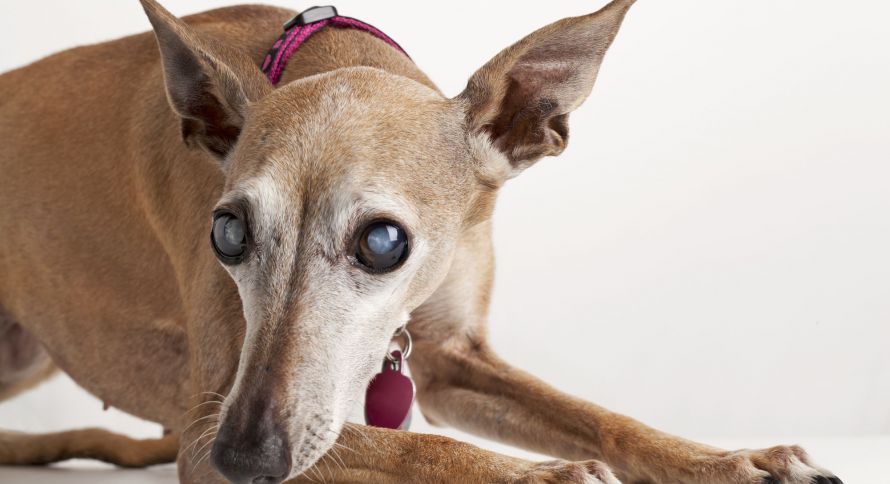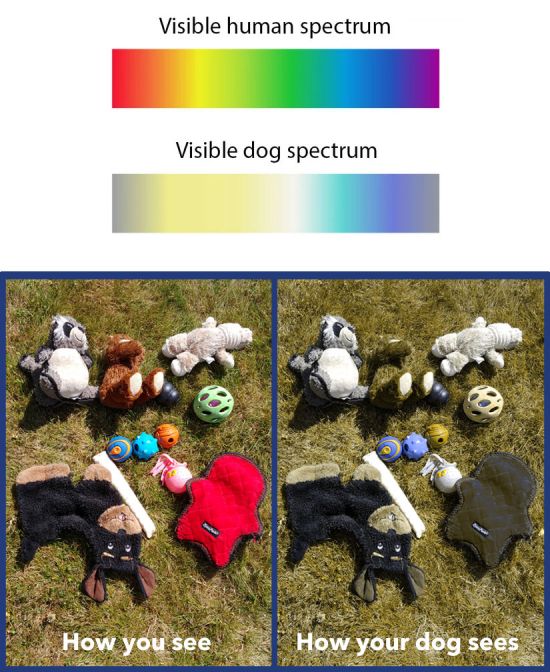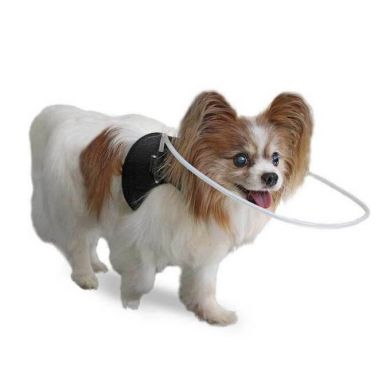
Top tips on providing the best quality of life for visually impaired and blind dogs
Blindness in dogs can occur suddenly but is more commonly a gradual condition related to health conditions and / or old age. Often it can be more stressful to us as the pet parent than to the pet itself as many dogs adapt very well. Dogs tend to care more about their overall environment, focusing on general comfort, food and companionship, rather than the one specific sense of sight.
That said, some dogs do become confused and nervous as their vision deteriorates: fear of stimulus from unknown sources may cause a change in behaviour, while other dogs may slump into depression as they reduce their activity and lose touch with some aspects of their world.
Here are some useful tips to help your dog adapt to the loss of sight.
1. Reduce any unexpected surprises
As your pet loses their eyesight they will rely more and more on their other senses as well as on their memory. Consider the following to prevent any unexpected surprises that could stress your dog.
- Do not make sudden changes to the layout of your home so that furniture, obstacles, and of course the favourite sleeping places remain where they are expected.
- Keep place food and water bowls in the same place.
- If you have other pets you could consider adding small bells to their collars so there is an additional audible indication of their presence.
- Speak to your pet more, so that it can hear exactly where you are as well as pick up other audio cues about their environment.
- Tell other people that your dog is blind or visually impaired, so they do not rush up and surprise. Consider getting a bandana or vest that reads "I'm blind" for your dog to wear during walks.
2. Reduce any hazards
Similar to how you might have puppy-proofed your home, it is important to prepare your home focusing on blind dog safety.
- Keep things tidy and remove any clutter that may become an unexpected obstacle.
- Get down low and look out for any sharp edges or objects that could injure your dog.
- Prune plants, especially those that might have spiky branches at your dog's head height.
- Add baby gates at the top of stairs or at the entrance to rooms with hazards.
- Reduce slippery surfaces by placing non-slip mats or rugs around the house - especially important for senior pets
3. Work to their strengths- understanding vision perception
Dogs also see colours differently from us! As they only have two types of colour receptors in their eyes, they can only see the colours blue and yellow. Colours such as green, yellow, and orange are yellowish, whereas purple is blue to them. In addition, red is difficult to see- it appears in a dark brownish-grey colour. With this information at hand, you can choose the colour of different supportive items to efficiently help your visually impaired dog.
- When using rugs and mats as non-visual guides, consider using yellow or blue colours to provide as much visual contrast as possible and encourage their use.
- Depth perception can be difficult! Add the most highly contrasting colour tape at the edge of steps, blue on light coloured floors and yellow on darker floors.
- Consider night lights to plug in sockets at night, which can improve their dogs’ night vision.

4. Use the other senses, especially smell
Dogs famously have an amazing sense of smell, with up to 300 million smell receptors in their noses (in contrast, humans only have 6 million!). Understanding how they perceive the world enables us to make their lives better!
- Apply pet-friendly essential oils on the corners of furniture so your dog can smell them before they bump into them.
- Consider differently scented candles in different rooms to help dogs differentiate which room they are in.
- If you are taking your dog into an unfamiliar environment for a while, be sure to provide them with bedding or clothing with familiar smells from home to act as a calming agent and point of focus.
As your pet learns to navigate with their other senses, it can be very helpful for them to have other non-visual guides.
- Try a new fountain-style water bowl that enables your pet to hear the splash of water and make it easy to locate.
- Place textured mats or rugs in key areas such as in front of large windows, or before steps, so that your pet can feel these boundary markers.
5. Provide clear communication and guidance
Become their Guide! As a dog becomes more visually impaired, communication will need to become much more vocal and utilising touch.
You are the most trusted companion and just the sound of your voice can help him work out where he/she is, and provide a calming influence. Indeed, training of verbal commands can be an important aspect as a dog's dependency on vision is reduced. Teaching commands such as “watch” and “step” can help maintain your pet’s awareness of dangers in the environment.
Physical touch will reassure your dog when outside on walks. Consider the use of a full harnesses, such as the Help 'em up harness, to provide guidance and constant feedback about where you are in close proximity, directional changes, and pauses before hazards such as steps or curbs. These work very well in conjunction with voice commands, providing your pet with multiple sources of information about their environment.
Other family pets are also often a reassurance, so where possible, encourage your other dogs to be your visually impaired doggy's own guide-dog!

6. Utilise equipment specifically developed for sight-impaired dogs such as the 'Walkin' Halo'.
The Walkin' Halo helps pets with vision loss to safely navigate the space around them. It acts as a bumper attached to the body via a comfy chest wrap, alerting your pet of nearby obstacles, instead of tripping or bumping into the wall. This easy concept is especially important and useful if your pet has previously injured their eye by bumping or falling, as often occurs.
The Walkin’ Halo empowers dogs with poor eyesight. The Halo helps pets with vision loss to confidently maneuver in the world around them. It warns your pet of nearby obstacles, avoiding bumps and trips, becoming familiar with their surroundings.
When the Halo makes contact with a hard surface, it both prevents from injuries and teaches your dog to change direction and walk around the object, acting as a safety barrier. The Halo safely guides your pet around their home environment, allowing them to participate in normal activities.

Related Products
Dr Buzby’s ToeGrips
HK$ 350
This site is protected by reCAPTCHA and the Google Privacy Policy and Terms of Service apply.







